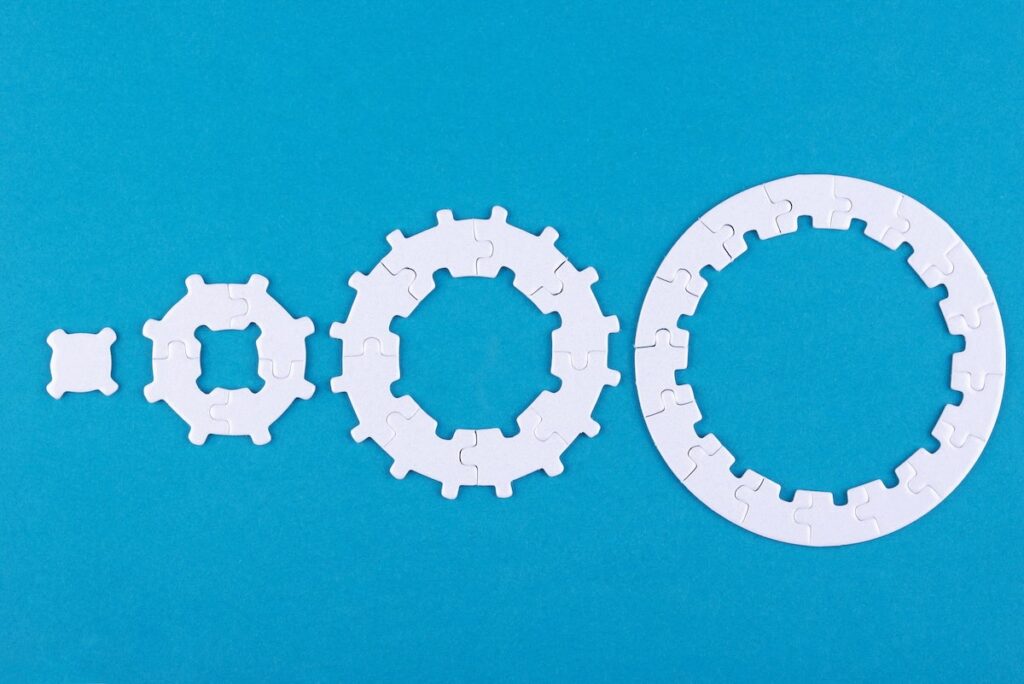Mastering Job Cost Sheets: A Guide for Construction Contractors
- Mastering Job Cost Sheets: A Guide for Construction Contractors
- What is Job Cost Sheets?
- Does Job Cost Sheet contain estimated or actual cost per job?
- How the Job Cost Sheet is using in a Sales Process?
- Should I show Job Cost Sheet to my customer?
- Job Cost Sheet example for a 300 m^2 brickwork job
- Job Cost Sheet and Commercial Proposal
- How does a Job Cost Sheet connect to revenue amount?
What is Job Cost Sheets?
A Job Cost Sheet is a detailed record or document that tracks and accumulates all the costs associated with a specific job or project. It’s commonly used in industries like construction, manufacturing, and other sectors where work is organized into distinct jobs or projects. The primary purpose of this sheet is to determine the total cost of a job and subsequently, to determine the profitability of that job.
Components of a Job Cost Sheet typically include:
- Direct Materials: This refers to the raw materials directly used in the production or execution of the job.
- Direct Labor: These are the wages paid to workers who are directly involved in the production process or execution of the job.
- Manufacturing Overhead: These are indirect costs, which are not directly traceable to a specific job but are apportioned based on some logical basis (like machine hours or labor hours).
- Job ID/Number: Every job is usually assigned a unique identifier for easy tracking and reference.
- Description: A brief description of the job or project.
- Total Job Cost: This is the sum of direct materials, direct labor, and allocated overhead.
- Other Costs: This can include any other costs directly attributable to the job but not categorized under the main headings. Examples might be specific equipment rentals, licenses, or permits for that job.
By analyzing a Job Cost Sheet, a company can determine the profitability of individual jobs, identify any cost overruns, and make informed pricing decisions for future projects.
Does Job Cost Sheet contain estimated or actual cost per job?
A Job Cost Sheet typically records the actual costs incurred for a job. However, it can also be used in the estimation phase to project potential costs based on past job expenses or industry benchmarks.
In the context of actual costs:
- As the job progresses, expenses related to direct materials, direct labor, and overhead are tracked and recorded on the Job Cost Sheet.
- This allows the company to monitor the ongoing costs of a job and compare them to the original estimates, facilitating effective cost control.
In the context of estimation:
- Before a job begins, a Job Cost Sheet can be prepared using estimated figures to give the company a projected cost for the job.
- This estimated cost sheet can be used to prepare quotes or bids for potential clients.
Once the job is completed, any discrepancies between the estimated and actual costs can be analyzed to improve future estimations and understand the profitability of the job.
How the Job Cost Sheet is using in a Sales Process?
Yes, you can use a Job Cost Sheet during the sales process, particularly when it’s important to provide a potential client with a detailed breakdown of the costs associated with a proposed job or project. Here’s how it can be beneficial during the sales process:
- Transparency with Clients: Sharing a detailed Job Cost Sheet can show potential clients that you’re transparent about where their money will go. It can help build trust, as clients appreciate understanding the cost components of a project.
- Bidding and Proposals: When preparing bids or proposals for potential jobs, a Job Cost Sheet can provide an organized estimation of the project’s costs. This aids in ensuring your bid is competitive yet profitable.
- Negotiation Tool: By having a detailed breakdown of costs, you can effectively negotiate with clients. If a client wants to reduce the project’s scope or budget, you can refer to the Job Cost Sheet to discuss which components can be adjusted.
- Customization of Offer: Different clients might have different needs or budgets. By using a Job Cost Sheet, you can customize your offer, showing various scenarios or options with their associated costs.
- Highlight Value: A detailed Job Cost Sheet can be used to emphasize the value you provide. For instance, you can showcase certain aspects like quality materials or specialized labor and justify their costs.
- Avoid Scope Creep: By defining and agreeing upon costs and deliverables upfront, you can set clear expectations and avoid scope changes without appropriate compensation.
While a Job Cost Sheet can be a valuable tool during the sales process, it’s essential to ensure its accuracy. An inaccurate estimation can lead to reduced profitability or even losses if the actual costs end up being higher than quoted.

Attention General Contractors! 🔨
Be at the forefront of innovation with our new #ConstructionManagementSoftware. Shape its evolution, enjoy features custom-fit to your workflow, get exclusive early access, and snag a unique annual discount. Ready to revolutionize your construction process?
Should I show Job Cost Sheet to my customer?
Whether or not to show the Job Cost Sheet to your customer is a strategic decision and depends on several factors, including the nature of your business relationship, the industry norm, and the level of transparency you wish to maintain. Here are the pros and cons of sharing a Job Cost Sheet with your customer:
Pros:
- Transparency: Sharing a detailed breakdown of costs can demonstrate transparency and honesty, potentially fostering trust between you and your client.
- Justification of Pricing: If clients question the quoted price or if it seems high to them, a Job Cost Sheet can help justify the costs. It allows them to see where their money is going.
- Negotiation Tool: In situations where there’s a tight budget or scope changes, a Job Cost Sheet can be a reference point for discussions, helping both parties understand where adjustments can be made.
- Setting Clear Expectations: A detailed cost breakdown can help set clear expectations about what’s included in a project and what might constitute additional costs.
- Professionalism: Presenting a well-organized cost breakdown can enhance your professional image, indicating to clients that you’re thorough and systematic.
Cons:
- Potential for Misunderstanding: Clients might not understand certain cost elements or why they’re necessary, leading to unwarranted challenges or disputes.
- Impact on Profit Margins: If the client sees a detailed breakdown, they might question profit margins or overhead costs, possibly pressuring you to reduce prices.
- Intellectual Property/Trade Secrets: Some elements of the cost structure could be proprietary, revealing how you do business. Sharing this could risk giving away trade secrets or strategic advantages.
- Overwhelming Details: Some clients might not want to get into the nitty-gritty of costs and could feel overwhelmed by too much information.
Recommendations:
- Tailored Sharing: Instead of sharing the detailed Job Cost Sheet, consider presenting a summarized version that provides enough detail to justify costs without overwhelming or revealing too much.
- Discuss First: If you’re unsure, discuss with the client. Ask them if they’d like a breakdown or if they’re interested in understanding the cost structure. Their response can guide your decision.
- Industry Norms: Consider the norms of your industry. In some industries, it’s standard practice to share detailed breakdowns, while in others, it might be rare.
In conclusion, there’s no one-size-fits-all answer. The decision should be based on the specific context of the project, the relationship with the client, and the potential benefits and drawbacks in each situation.
Job Cost Sheet example for a 300 m^2 brickwork job
Job Cost Sheet Job ID: BW-12345
Description: 300 m^2 Brickwork
| Cost Component | Description | Unit Cost | Quantity | Total Cost |
|---|---|---|---|---|
| Direct Materials | ||||
| Bricks | Standard red bricks | $0.70/brick | 15,000 | $10,500 |
| Mortar | Premixed bag | $8/bag | 100 | $800 |
| Direct Labor | ||||
| Masons | Hourly wage | $30/hour | 150 hours | $4,500 |
| Laborer/Helper | Hourly wage | $20/hour | 100 hours | $2,000 |
| Overhead | ||||
| Equipment Rental | Mixer, scaffolding, etc. | $100/day | 5 days | $500 |
| Licenses & Permits | Municipal permits | $300/job | 1 job | $300 |
| Other Costs | ||||
| Transportation & Delivery | Delivery of bricks & materials | $150/delivery | 2 deliveries | $300 |
| Waste Management | Removal and disposal of waste | $50/job | 1 job | $50 |
| Total | $18,950 |
Job Cost Sheet and Commercial Proposal
As a general contractor, a Job Cost Sheet can be an invaluable tool when preparing a commercial proposal for a customer. Here’s how the Job Cost Sheet can be beneficial:
- Detailed Breakdown: The Job Cost Sheet offers a comprehensive breakdown of costs involved in the project. This transparency can build trust, as clients often appreciate understanding where their money is going.
- Pricing Accuracy: A well-prepared Job Cost Sheet helps ensure that all potential costs are considered. This reduces the risk of underquoting, which could lead to losses, or overquoting, which could make you less competitive.
- Negotiation Tool: With a detailed breakdown of costs, you can effectively negotiate with clients. If they have a set budget or are hesitant about certain costs, you can refer to the sheet to discuss potential modifications or alternatives.
- Value Demonstration: A Job Cost Sheet can be used to highlight the value of the services you provide. By itemizing elements like quality materials, specialized labor, or unique services, you can justify the associated costs.
- Setting Expectations: Presenting a Job Cost Sheet sets clear expectations for both you and the client. It defines what is included in the quoted price, reducing the chances of misunderstandings or disputes later on.
- Optional Services & Upgrades: A Job Cost Sheet can easily showcase optional services or upgrades. For instance, if a client is considering an upgrade in materials or additional services, you can provide a revised cost sheet to reflect these changes, aiding the decision-making process.
- Mitigating Scope Creep: By specifying and agreeing upon costs and deliverables upfront, you can set boundaries, helping to avoid potential scope changes without appropriate compensation.
- Professionalism: Presenting a well-organized, detailed Job Cost Sheet can enhance your professional image, indicating to clients that you are thorough and systematic in your approach.
To use the Job Cost Sheet effectively in your commercial proposal:
- Personalize it: Tailor the sheet specifically for the client’s project. Use their name, project title, and any other specifics.
- Add a Summary: Before diving into details, provide a concise summary highlighting the total cost and major components.
- Provide Explanatory Notes: Include any notes or explanations for particular costs, especially if they might be unfamiliar to the client.
- Include Visuals: If possible, add visuals like charts or graphs that offer a quick overview of cost distribution.
Remember, while the Job Cost Sheet is detailed, your commercial proposal should also include other elements like project timelines, terms and conditions, references, and any other information pertinent to the job and your relationship with the client.
Software Development Life Cycle (SDLC)
Understanding Odoo CRM: A Comprehensive Guide
Job Cost Sheet in Construction Explained
Mastering Job Cost Sheets: A Guide for Construction Contractors What is Job Cost Sheets? A…
Odoo Enterprise vs. Cloud vs. Community Editions: A Comprehensive Comparison
Odoo Editions Unraveled: Enterprise vs. Cloud vs. Community Starting a new Odoo Implementation project can…
What is The Easiest Way to Hire Odoo Developer?
When it comes to hiring an Odoo developer, it’s essential to follow a straightforward process…
As iOS 17 rolls out, it’s clear that Apple has packed it with a treasure trove of features to explore, enhancing our iPhone experience like never before.
How does a Job Cost Sheet connect to revenue amount?
A Job Cost Sheet primarily details the expenses associated with a specific job or project. To determine profitability or forecast revenue, you’d compare the total costs from the Job Cost Sheet against the revenue generated from that job. Here’s how the two relate:
- Determination of Sales Price: Before you quote a price to a client, you need to know your costs. The Job Cost Sheet allows you to sum up all expenses related to the job, ensuring you set a price that covers these costs and provides a desired profit margin.
- Profitability Analysis: Once you have both the total costs (from the Job Cost Sheet) and the revenue (from the sales or contract price), you can subtract the former from the latter to determine the profit for that specific job:Profit = Revenue – Total Costs
- Job Efficiency Analysis: By comparing the anticipated costs from the Job Cost Sheet against the revenue, you can gauge the efficiency and profitability of each job. If certain jobs consistently result in lower profits despite high revenues, it’s an indication to review and possibly adjust your pricing structure or find ways to reduce costs.
- Cash Flow Management: A Job Cost Sheet can help in anticipating expenses for the project, enabling better cash flow management. When you know the expected inflow (revenue) and outflow (costs), you can make informed decisions about funding, credit, and payment schedules.
- Performance Metrics: By connecting the cost sheet to revenue, you can derive various performance metrics like profit margin percentage, cost-to-revenue ratio, etc., aiding in strategic decision-making.
- Client Negotiations: If clients push for discounts or changes that might impact the job’s revenue, having a clear picture of your costs (via the Job Cost Sheet) is invaluable. It allows you to understand how much wiggle room you have before affecting profitability.
- Future Bidding and Proposals: Past Job Cost Sheets, when compared with actual revenues, can provide insights for future bids. If you find that certain types of jobs are consistently more profitable, you might prioritize them. Conversely, you can identify which jobs might need a pricing strategy overhaul.
In essence, while the Job Cost Sheet is about costs, its connection to revenue is crucial. It bridges the gap between expenses and income, providing clarity on the overall financial health of each project and aiding in strategic planning and decision-making for a general contractor.









